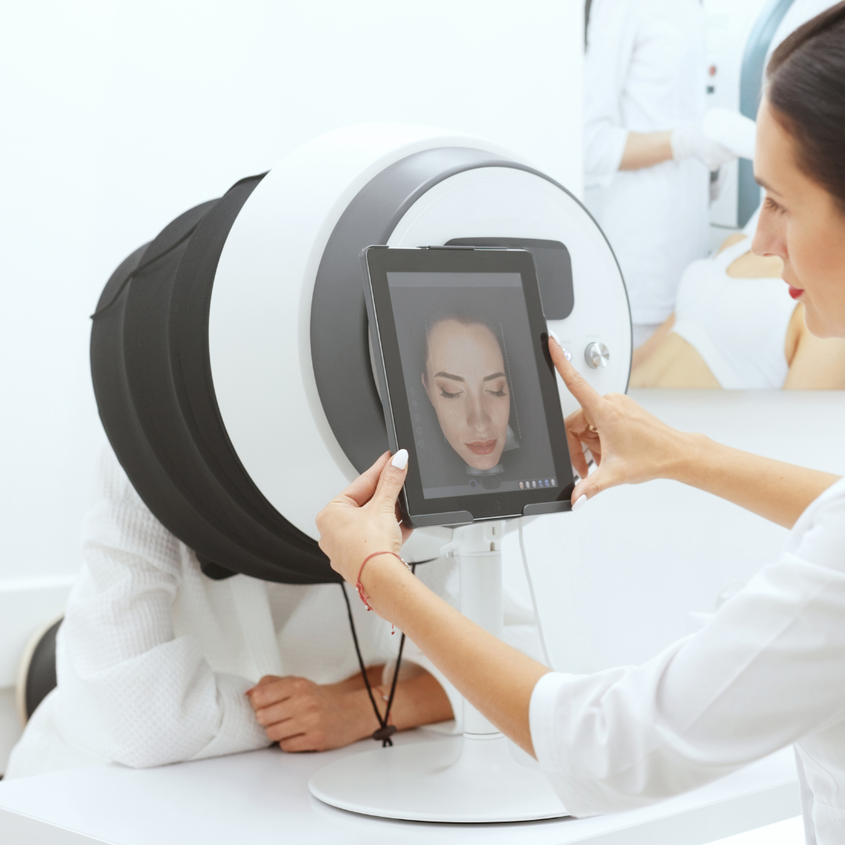Advertisements
Discover Right Now How to Identify Skin Problems with Your Cell Phone: Apps, Find out if it's just a pimple or something else and initial care
Why use a skin analysis app?
Certainly, use one application that identifies skin problems by photo brings more autonomy and quick access to healthcare.
Additionally, it can serve as initial support before seeking medical help, offering reliable information through artificial intelligence (AI) analysis.
Furthermore, technology has evolved a lot.
Now, some apps can detect more than 200 to 288 dermatological conditions — from acne to signs of skin cancer — with accuracy comparable to that of experts. tecmundo.com.br+1mobiletime.com.br+1arxiv.org+6olhardigital.com.br+6mobiletime.com.br+6.
Therefore, understanding how these apps work and which ones to use can make the difference between delayed diagnosis and effective preventative action.
How does photo skin analysis work?
Firstly, AI technology uses neural networks trained with millions of labeled images.
Additionally, these networks identify patterns of spots, rashes, pimples, moles, and other problems with high accuracy.
Additionally, some clinical models offer medical accuracy:
For example, Google's system correctly detected a condition in the top three suggestions in 84% of the cases, reaching 97% considering all options uol.com.br.
However, it is worth noting:
These apps do not replace a medical evaluation, but rather offer a first step, especially in places where access to dermatologists is limited.
App 1: Google Lens/Derm Assist
Certainly, the Google Lens already identifies skin problems by analyzing rashes, lice, nails and other signs.
Because the resource suggests similar conditions based on photos and clearly warns that it is informative, not diagnostic. saude.abril.com.br+8mobiletime.com.br+8gizmodo.uol.com.br+8.
Furthermore, the tool DERM, still being tested in some countries, detects 288 dermatological conditions related to skin, nails and hair wired.com+6mobiletime.com.br+6olhardigital.com.br+6.
Therefore, Google is advancing in the democratization of medical data through AI, but always aligning with warnings that consulting a doctor is essential.
App 2: AI Dermatologist / SkinGuru / IA Derma / Skinive
First of all, there are several national and international apps that combine AI and usability:
- On Android there is the AI Dermatologist, which makes a preliminary assessment of moles, spots and temporary changes cancerdepelecirurgia.com.br.
- On iOS, there is the SkinGuru – AI Skin Scanner, with evaluation of acne, eczema and psoriasis glamar.io+11cancerdepelecirurgia.com.br+11apps.apple.com+11.
- Already the IA Derma It is Skinive (iOS and Android) detect acne, eczema, psoriasis, skin cancer risk (BCC, SCC, melanoma), warts, rosacea and more marieclaire.co.uk+4apps.apple.com+4apps.apple.com+4.
Additionally, Skinive is CE certified and has already performed over 3 million assessments, detecting over 200,000 cases. apps.apple.com.
However, everyone warns:
“Preliminary evaluation is not a medical diagnosis” — that is, does not replace a dermatologist.
App 3: SkinScreener, Scanoma and Dermanostic (skin cancer and teledermatology)
At first, apps like SkinScreener It is scanoma focus on skin cancer screening and mole risk assessment.
Because they use clinically trained AI and offer color-coded risk maps — although they only cater to skin types I to IV. wired.com+3androidmedical.com+3marieclaire.co.uk+3.
Furthermore, Scanoma connects you with a real dermatologist for a second opinion, although the AI already does an initial analysis.
Furthermore, there is the Dermanostic, which connects you with doctors within 24 hours, ideal for remote consultations and digital prescriptions for around €25 androidmedical.com.
So, if you want to do monitoring or screening, these apps are a good entry point — but always with professional supervision.
Limitations and precautions
First of all, photo quality makes all the difference.
Because AI apps require clear photos, with good lighting and adequate focus to perform correct analysis apps.apple.com+7cancerdepelecirurgia.com.br+7pt.wikipedia.org+7apps.apple.com+1apps.apple.com+1.
Additionally, many algorithms are trained more deeply on light skin, which can yield less accurate results on African-descendant skin.
Therefore, if the app identifies a risk of cancer or a suspicious change, do not hesitate to go to the doctor, even if everything seems normal.
How to use the app correctly
1. Choose a reliable app
Initially, look for apps with a clinical history, user base, and certifications (CE, FDA, Class I).
Because apps with support are more reliable.
2. Install safely
Then download it from the App Store or Google Play.
Avoid unknown sources to avoid compromising your data.
3. Read the terms and permissions
So, allow access to camera, gallery and location only if necessary.
Pay attention to the use of personal data.
4. Take the right photo
Then, take a good look at the photo:
- Good lighting (natural light or lamp)
- Clean focus without shadows
- Camera perpendicular to the skin area
5. Wait for the analysis
Then, within seconds, the AI returns options for possible conditions.
Please read the warnings and compatibility section carefully.
6. Record and monitor
Then, use the history option to track moles and spots over time.
7. See a doctor
Finally, if the app suggests risk or you notice changes, make an appointment with a dermatologist.
Ethical and privacy considerations
Above all, these apps handle sensitive biometric data.
Therefore, prefer apps that follow GDPR, ISO, or good security practices.
Additionally, your photos should be stored locally or encrypted — always with control over the material itself.
Still, avoid sharing on social media or groups to maintain your privacy.
Conclusion
In short, AI applications can be important allies in identifying skin problems.
They help with screening, monitoring, and provide quick information about acne, eczema, psoriasis, and cancer risk.
However, always with responsibility: the analysis is preliminary, and a medical consultation is essential if you have any questions.
So, take care of yourself intelligently: use technology to your advantage, but always respect medical limits!
Top news about skin apps and AI

:max_bytes(150000):strip_icc():format(jpeg)/194946190_4157634421014038_4410518955403619963_n-a94a1e8a62714b58a3f347930f0b5bef.jpg)